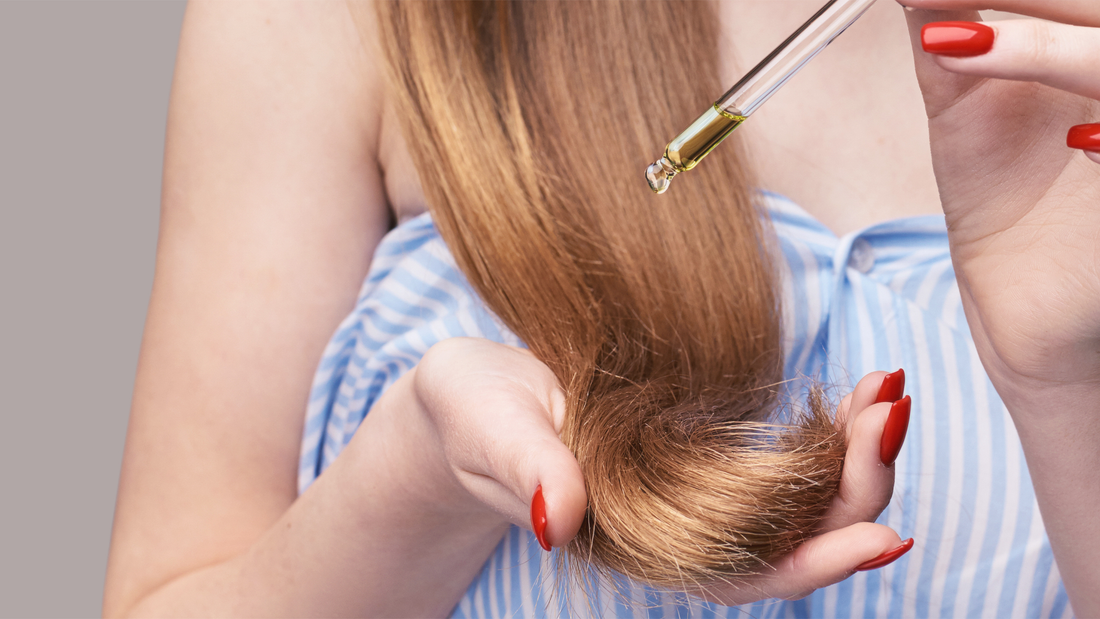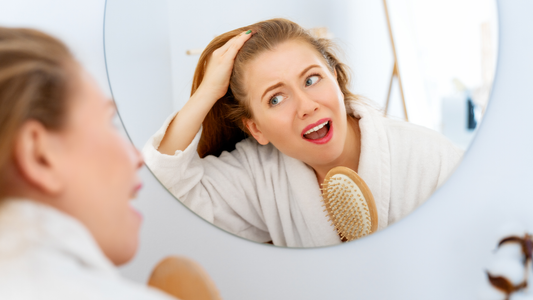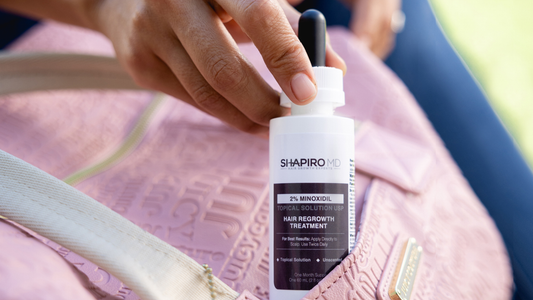There is no single, surefire way to fully stop and control hair loss—you're either going to experience it or you're not. But, powerful and effective medications do exist that can help regrow hair and reduce thinning and shedding. In fact, with the right products and the right advice, you may be able to slow or even reverse the effects of hair loss.
If you're tired of living with a horseshoe patch of baldness on the crown of your head, or if you're embarrassed about that bald spot that shows when you throw your hair into a ponytail, you're in the right place. Experts agree that with the right combination of topical treatments, prescription medications, and at-home care, you can prevent future hair loss and maybe even restore your locks.
Shampoos, Conditioners, And More
Countless over-the-counter shampoos exist on the market today that promise to stop hair loss and stimulate hair growth. Unfortunately, despite the many claims by shampoo manufacturers, there isn't any single shampoo on the market that can stop hair loss from happening. But they can help.
The right shampoos and conditioners can nourish the locks remaining on your head and make your hair appear healthier and fuller. Some products contain ingredients that, when applied properly, can boost blood circulation and help stimulate hair follicles to promote a healthier head of hair. Some also contain natural ingredients that have been used throughout history to fight thinning and balding, like green tea extracts and saw palmetto berry extracts. Both are recognized for the ability to fight DHT, the hormone that’s widely believed to contribute to or cause hair loss in men and women. Shapiro MD Shampoo and Conditioner are in this camp, containing naturally occurring DHT fighters in a sulfate-free formula.
The bad news with over-the-counter hair loss shampoos is that they’re not a single panacea. The good news is they’re easy to use and can help to improve the look and feel of your hair from day one.
Laser Light Therapy
Laser light therapy is the latest and greatest in hair loss treatment and works by stimulating blood flow tino the affected area. You can opt to have the treatment done in an office or buy a small, handheld device and perform the process on your own. For maximum results, most products suggest treatment for 15-30 minutes a day, three days a week, indefinitely. This can vary by manufacturer and device.
When you research LLT for hair loss, you're sure to pull up a lot of mixed reviews. Some articles will tell you that laser light therapy is a hoax and that it does more harm than good. Others will say that the treatment is effective for keeping what hair you do have. Most of the published research on the subject suggests LLLT does have stimulatory effects and can improve hair growth. According to the findings, lower-level laser light therapy for hair loss is both a safe and effective treatment for men and women alike.
Hair Replacement Surgery
Hair transplant surgery is the quickest fix for replacing lost strands. This surgery involves a doctor surgically removing a strip of hair from the back of your head, dissecting each hair graft under a microscope, and then transplanting those grafts into thinning areas of your head. If your hair is so far gone that you don't have a lot of donor hair on your head to contribute, doctors may pull hair from hair-rich parts of your body, such as your back, stomach, or chest. While hair transplants can be effective to replace lost locks, they’re also expensive and invasive.
The good news is that this technology has come a long way. The unnatural looking “hair plugs” you may have seen years ago have been replaced by much more natural-looking transplants.
Minoxidil
Minoxidil is the active ingredient found in Rogaine® and many hair loss serums for men and women today, as this ingredient is now available as a generic drug. The ingredient is used to relax blood vessels and increase the blood and oxygen supply to the scalp. It is one of only two FDA-approved drugs for hair loss. Minoxidil not only helps slow the hair loss process, it also helps stimulate new growth.
It was the first drug approved for hair loss, and when it became available in the 1990s it required a prescription from a doctor. Today, you can get minoxidil online or at drug stores as an over-the-counter medication: the FDA deemed it so safe, they no longer require a doctor’s prescription.
Finasteride
Finasteride is the only oral pill that’s available for hair loss, and its use is restricted to men only. Women should not take finasteride. That’s because finasteride is a 5-alpha-reductase inhibitor, an antiandrogen, which affects how hormones are produced/changed in the body.
Finasteride reduces the amount of dihydrotestosterone circulating in the body. This is the primary hormone that causes hair loss in androgenic alopecia, and by reducing levels in the body, normal hair growth can continue. Men dealing with hair loss will require a prescription for finasteride, which is available from telehealth providers like Shapiro MD.
Finasteride was originally approved by the FDA as Propecia® and Proscar®, but it’s now a generic drug that you can purchase cheaply from Shapiro MD.
The Verdict
Unfortunately, it's difficult to prevent hair loss for good without professional help. However, with the right combination of treatments, you can maintain the hair you do have and, thanks to effective prescription medications like minoxidil, finasteride, and proper hair care, even regrow some of the hair you’ve lost.
A hair care expert from Shapiro MD can help you find the right solution, affordably and simply, from home. Our physicians can prescribe medications virtually and done online, if appropriate, and can help you get custom prescription treatments delivered to your door. Get started at ShapiroMD.com today.




